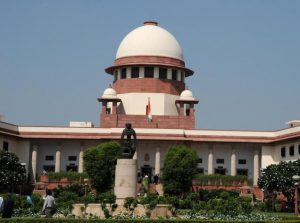 Professor Satya Narayan Misra in Bhubaneswar, January 10, 2023: The Constitution Bench in a 4-1 judgement found no flaw in the union government’s process to demonetize500- and 1000-rupee bank notes through government notification issued on 8th November 2016.
Professor Satya Narayan Misra in Bhubaneswar, January 10, 2023: The Constitution Bench in a 4-1 judgement found no flaw in the union government’s process to demonetize500- and 1000-rupee bank notes through government notification issued on 8th November 2016.
Justice Gavai writing the majority judgement observed that the procedure under Section 26(2) of The RBI Act was not violated, just because the Centre had taken the initiative to advise the Central Board of the RBI to consider demonetization. In a sparkling dissenting judgement, Justice Nagarathna has observed that the Centre should have issued a notification under section 26(2) only if the Central Board of RBI had initiated the proposal to demonetize.
The government could have gone forward by promulgating an ordnance or legislative act, should there be any difference of opinion between the Central Board and the government. She has further observed “Parliament is the nation in miniature and without Parliament, democracy will not thrive. No meaningful application of the mind by the government seems to be visible when 86% of the currency had ceased to be circulated, causing severe financial crunch and socio-economic despair, she observed.”. The process undertaken was bad in law, in her view.
The difference of opinion between the majority of judges and the lone dissenting voice is based on the interpretation of section 26(2) of the RBI act which states “On the recommendation of the Central Board, the central government may declare that any series of bank notes of any denomination shall cease to be legal tender. The four judges are of the view that recommendation means a consultative process which was initiated 6 months before the promulgation of the government order.

A money lender counts Indian rupee currency notes at his shop in Ahmedabad, in this May 6, 2015 file photo. REUTERS/Amit Dave/Files
Further, it was done for the elimination of fake currency, black money and terror financing. There was thus a reasonable nexus between the measure of demonetization and its objectives. It, therefore, satisfied the basic canon of proportionality test for adjudicating the reasonability of a government decision. It would thus be seen that while the dissenting judgement has interpreted Section 26(2), in a literal manner, the majority judgement has taken a more expansive opinion of the consultative process between the RBI and the government.
However, the majority verdictdisappoints on a major score, as to whether the intended objectives of demonetizationhave been achieved or not. The majority judgement observes that “it is not relevant for the Court to examine whether the objectives have been achieved and that the central government is the best judge”.
On the other hand, the dissenting judge seems to believe that it has caused a severe financial crunch and socio-economic despair. There have been several studies on the impact of demonetization on the Indian economy but none of them has been able to clearly quantify the extent of GDP loss, except to state that it affected the informal sector badly which was dependent on cash.
In particular, it affected the agricultural sector, which was in the thick of harvesting and bereft of cash the small farmers were hugely affected. Also, on the question of reducing black money, nearly 98% of demonetized notes came back to the banks. On the stated objective of reducing terror financing, no incontrovertible evidence is available. It also caused serious hardship to common people standing in long queues; as the RBI had not put in place make alternate arrangements for dispensing cash with new series of notes.
The court should have ideally examined the outcomes in a holistic manner of the outcomes of the intended objectives, the way C& AG carries out a performance audit of government programs by looking at Economy, Efficiency & Effectiveness. and provided proper advisory to the government.
Interestingly, when the Morarji Desai government decided to demonetize the high-value currencies in January 1978, the then RBI Governor I G Patel had strong reservations. He writes in his autobiography Insider’s View that he spoke to H M Patel, the then Home Minister, who advised him to speak to the PM. When IG told the PM not to play politics with economics, Mr Desai apparently asked him not to interfere in the process.
As per the grapevine, Mr. Raghu Rajan was not in favour of the government’s decision. However, the judgement does not bring out if the consultative process started in May 2016 when Rajan RBI Governor contained any dissenting opinion by him. Such disclosure would have cleared the air about the role Rajan played in the whole process.
 Interestingly the demonetization decision in 1978 was challenged in the Supreme Court on the ground that it curtailed freedom of trade and commerce, a fundamental right under Art19(1)(g). A unanimous court in 1994 did not agree with the challenge. It must, however, be pointed out that the high-value currencies in 1978 constituted only 1% of total cash under circulation unlike 2016 when it accounted for 86% in 2016, contributing to the huge economic disruption.
Interestingly the demonetization decision in 1978 was challenged in the Supreme Court on the ground that it curtailed freedom of trade and commerce, a fundamental right under Art19(1)(g). A unanimous court in 1994 did not agree with the challenge. It must, however, be pointed out that the high-value currencies in 1978 constituted only 1% of total cash under circulation unlike 2016 when it accounted for 86% in 2016, contributing to the huge economic disruption.
Thedissent by Justice Nagarathna reminds one of the famous dissents by Justice HR Khanna in the SP Shukla Vs ADM Jabalpur Case (1976) where he upheld the detenu’s right to habeas corpus to arbitrary arrest even during the imposition of emergency. He quoted Justice Hughes: “A dissent in a court of last resort is an appeal to the brooding spirit of the law, to the intelligence of a future date, when a later decisionmay possibly correct the error in to which the dissenting judge believes thatthe court seems to have been betrayed.”
She has been bold enough to conclude, unlike four of her colleagues that the recommendations were obtained from the board anddid not originate from the RBI. She also reminds of Justice Ruth Bader Ginsberg of the US Supreme Courtwho strongly upheld the Equal Protection clause for women in her judgements. In a strong dissenting opinion in Ledbetter Vs Goodyear Case (2007), she differed with a majority who justified pay discrimination against women.
Quite clearly in the demonetization case autonomy and professional independence of the RBI board were compromised at the behest of an authoritarian government. The tendency to emasculate independent institutions is quite rampant in the present majoritarian dispensation, remindingme of the years 1973-77 when the Indira government wantedjudges who committed to the ideology of the party to the party in power than to the rule of law. In the Modi-compliant milieu that permeates, Justice Ragarathna’s dissent is like a breath of fresh air and healthy signage for democracy.


Leave a Reply
Be the First to Comment!